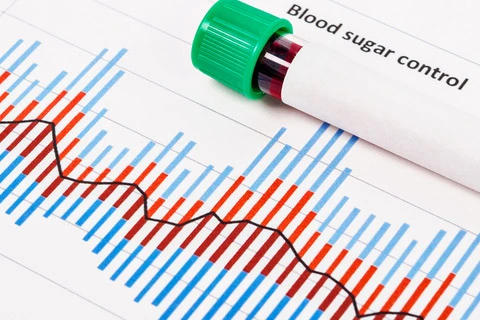Meta Analysis Standards

Meta Analysis Standards compare results against other results, finding precision and accuracy, and identifying potential errors in reproducibility. Especially useful when laboratories refer to results put forth by another laboratory or results from the past, meta analysis stanards directly address the issue of reliability and provide tools towards this end.
CLSI EP05-A3 (R2019)
Evaluation of Precision of Quantitative Measurement Procedures; Approved Guideline - Third Edition
This document provides guidance for evaluating the precision performance of quantitative measurement procedures. It is intended for manufacturers of quantitative measurement procedures and for laboratories that develop or modify such procedures.
CLSI EP06
Evaluation of Linearity of Quantitative Measurement Procedures - 2nd Edition (This document replaced EP06A)
This guideline provides information for characterizing the linearity interval of a measurement procedure, validating a linearity interval claim (to be performed by the manufacturer), and verifying an established linearity interval claim (to be performed by the end user).
CLSI GP29-A2
Assessment of Laboratory Tests When Proficiency Testing Is Not Available; Approved Guideline-Second Edition
Clinical and Laboratory Standards Institute document GP29-A2 - Assessment of Laboratory Tests When Proficiency Testing Is Not Available; Approved Guideline - Second Edition offers methods to assess test performance when formal proficiency testing (PT) programs (also known as external quality assessment [EQA] programs) are not available. The guideline includes examples with statistical analyses. This document is intended for use by laboratory managers and testing personnel in traditional clinical laboratories as well as in point-of-care and bedside testing environments. See CLSI QMS24-Ed3 (R2021).
CLSI POCT06-Ed1 (R2020)
Effects of Different Sample Types on Glucose Measurements, 1st Edition
This report is designed to help clinicians, system evaluators, regulators, and manufacturers understand the influence of various parameters on glucose test result comparisons and to understand the clinical challenges that exist when glucose methodologies, sample types, and user techniques differ. This report is intended to help discern whether or not a difference between glucose results is caused by 1) the test measurement procedure(s), 2) patient-specific interferences, 3) the protocol, or 4) by some combination of these factors. It also includes consideration for sample type, fluid compartments, physiology, and calibration of the devices. The intended users of this report are clinicians, point-of-care teams, pathologists, laboratory directors, and manufacturers of glucose testing devices. The information will help users to understand the clinical challenges that exist within the continuum of care when glucose is measured using different methodologies and sample types. This report is not intended to be used for measurement procedure validation of new technologies.
CLSI C24-Ed4
Statistical Quality Control for Quantitative Measurement Procedures: Principles and Definitions, 4th Edition
This guideline provides definitions, principles, and approaches to laboratory quality control design, implementation, and assessment.
CLSI EP26-A
User Evaluation of Between-Reagent Lot Variation; Approved Guideline
This guideline provides a simple, practical, and statistically sound protocol to evaluate the consistency of patient sample results when a new analytical reagent lot replaces a reagent lot currently in use. This document is designed primarily for use with quantitative measurement procedures, but the same principles can be applied to measurement procedures that provide a clinically qualitative result based on a supplied quantitative measurement. This guideline is not intended for use with measurement procedures that only provide qualitative results. This guideline is intended for use in the clinical laboratory and is designed to work within the practical limitations that exist in that environment. This guideline is not intended to provide detailed procedures for reagent manufacturers. The needs of reagent lot-to-lot testing by manufacturers, and the resources available, are different from those of the clinical laboratory. However, reagent manufacturers may use this document to understand the types of verification studies that may be performed in their customers’ laboratories.
CLSI EP12-A2
User Protocol for Evaluation of Qualitative Test Performance; Approved Guideline-Second Edition
This document provides a consistent approach for protocol design and data analysis when evaluating qualitative diagnostic tests. Guidance is provided for both precision and method-comparison studies.
CLSI EP24-A2
Assessment of the Diagnostic Accuracy of Laboratory Tests Using Receiver Operating Characteristic Curves; Approved Guideline - Second Edition
This document provides a protocol for evaluating the accuracy of a test to discriminate between two subclasses of subjects when there is some clinically relevant reason to separate them. In addition to the use of receiver operating characteristic curves and the comparison of two curves, the document emphasizes the importance of defining the question, selecting the sample group, and determining the "true" clinical state.
CLSI EP21-Ed2
Evaluation of Total Analytical Error for Quantitative Medical Laboratory Measurement Procedures - 2nd Edition
This guideline provides manufacturers and end users with an understanding of concepts related to total analytical error (TAE) for quantitative measurement procedures. An experimental protocol and data analysis method are provided to estimate TAE based upon a comparison of methods experiment with patient specimens, and to assess it relative to a pre-established goal for clinical acceptability.
CLSI EP28-A3C
Defining, Establishing and Verifying Reference Intervals in the Clinical Laboratory; Approved Guideline - Third Edition
This document contains guidelines for determining reference values and reference intervals for quantitative clinical laboratory tests. A CLSI-IFCC joint project.. The U.S. Food and Drug Administration (FDA) has evaluated and recognized this approved-level consensus guideline for use in satisfying a regulatory requirement. This document is included in the CLSI document code change and rebranding that is currently in process. The code will be changed from C28-A3c. Please make sure that the document title corresponds to the publication that you intend order
